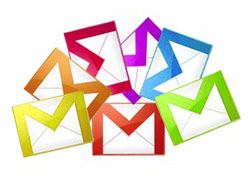The Gmail world kicked off this week with news of a vulnerability in the mail client which could allow an attacker, if he got his hands on your Gmail cookie, to set up certain filters (without your knowledge of course) which would automatically forward your incoming mail back to him. While the whole world speculated this to be a Gmail security vulnerability, Google has come out to say that it is not; this is nothing more than an elaborate phishing attack.
“Attackers sent customized e-mails encouraging web domain owners to visit fraudulent websites such as "google-hosts.com" that they set up purely to harvest usernames and passwords. These fake sites had no affiliation with Google, and the ones we've seen are now offline. Once attackers gained the user credentials, they were free to modify the affected accounts as they desired. In this case, the attacker set up mail filters specifically designed to forward messages from web domain providers,” say Chris Evans from Gmail.
Once the issue came to light, the Google security team wasted no time in addressing it, since this is what Google does – fixes problems quickly. The thing is that as long as you follow a simple set of rules, you will stay safe online, which is crucial, especially if you consider that window of opportunity between the time a flaw, vulnerability or security issue is discovered and the time it is fixed.
After you have finished reading your mail, chatting, or composing outgoing mail, it is not enough to simply close the browser application. What you should do is log out. Do this every time you are not using your Gmail account.
This next one is a no-brainer, but you would not believe how many people are tricked by it: do not visit shady, unscrupulous sites. Go only for trustworthy sites that are not spreading malware or trying to steal your confidential info. Enable the “https-only” feature.
If you are using Firefox 3.0.4, make sure that the adequate security options are active: “Tell me if the site I’m visiting is a suspected attack site”, “Tell me if the site I’m visiting is a suspected forgery”. It might also prove wise to install a security add-on, something like NoScript.
“Attackers sent customized e-mails encouraging web domain owners to visit fraudulent websites such as "google-hosts.com" that they set up purely to harvest usernames and passwords. These fake sites had no affiliation with Google, and the ones we've seen are now offline. Once attackers gained the user credentials, they were free to modify the affected accounts as they desired. In this case, the attacker set up mail filters specifically designed to forward messages from web domain providers,” say Chris Evans from Gmail.
Once the issue came to light, the Google security team wasted no time in addressing it, since this is what Google does – fixes problems quickly. The thing is that as long as you follow a simple set of rules, you will stay safe online, which is crucial, especially if you consider that window of opportunity between the time a flaw, vulnerability or security issue is discovered and the time it is fixed.
After you have finished reading your mail, chatting, or composing outgoing mail, it is not enough to simply close the browser application. What you should do is log out. Do this every time you are not using your Gmail account.
This next one is a no-brainer, but you would not believe how many people are tricked by it: do not visit shady, unscrupulous sites. Go only for trustworthy sites that are not spreading malware or trying to steal your confidential info. Enable the “https-only” feature.
If you are using Firefox 3.0.4, make sure that the adequate security options are active: “Tell me if the site I’m visiting is a suspected attack site”, “Tell me if the site I’m visiting is a suspected forgery”. It might also prove wise to install a security add-on, something like NoScript.

























